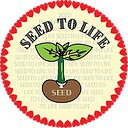Traditional Medicine- African Bitter Leaf |Vernonia amygdalina
A plant that not only humans but animals like chimpanzees also trust.
According to one report by Royal Botanic Garden (2016), there were approximately 391,000 species of identified plants in the world. But according to UN report on the number of species, the number of species is declining rapidly every year. I understand that with changing climate, evolution, and the factors that we don’t even know about, some species are going to be lost. It makes me very sad that the plants and trees that we once used to see in our childhood are hard to find easily. The plants that lived for thousands of years are getting lost in this rapidly changing world. Through my YouTube channel Seed to Life, I try to explore different plants, their ancient history, propagation methods, growing requirements, and health benefits. Today I’m going to introduce you to one more interesting plant that is used as traditional medicine by humans for themselves and for their livestock. And, what is even more interesting is that chimpanzees have been observed to eat these leaves to get rid of the intestinal parasites. Isn’t that amazing?
Botanical Name
Vernonia amygdalina
Other Names
Some of the names in different languages are as follows.
- Ewuro
- Onugbu
- Oriwo
- Ityuna
Medicinal Uses of Bitter Leaf Plant
The leaves and root extracts or decoctions are used as traditional remedies for fever, diarrhea, hiccups, kidney problems, and malaria. Infusion of the roots is used for the treatment of intestinal worms. This remedy is not only used by humans to cure themselves and their livestock but as I mentioned earlier also by chimpanzees who use the leaves to get rid of the intestinal worms. The plant is used as a natural medicine for treating malaria. The leaves are part of folk remedies in treating various infections and sores. The plant is also believed to be effective against diabetes, snake bite, and cancer.
The Bitter Leaf plant is a good source of dietary fibers, proteins, various minerals like calcium, magnesium, potassium, sodium, manganese, iron, zinc, and copper. Some of these nutrients and anti-nutrients are lost when the leaves are processed. So, squeeze washing and cooking can reduce the efficacy of these phytochemicals. The water content of the leaves is more than 80 percent.
I always try to find out both the good and bad effects of consuming any new plant. The research on the side effects of the bitter leaf plants is very limited. If grown in the soil contaminated with heavy metals, the plants may absorb harmful chemicals. It can cause allergic reactions and side effects due to the anti-nutritional factors in them but other than that there was not much information available. But in my opinion, if something is that potent as a medicine then it should be consumed with care. I hope in future all plants will be studied in more detail for their good and bad effect. Till then, I believe like other leafy vegetables, it is okay to enjoy this vegetable in moderation.
Nutritional Content
The nutritional composition of Vernonia amygdalina leaves per 100 g edible portion is:
Energy- 218 kJ (52 kcal)
Nutrition Content
- Water- 82.6 g
- Protein -5.2 g, fat 0.4 g
- Carbohydrate -10.0 g,
- Dietary fibers - 1.5 g
- Calcium (Ca) -145 mg
- Phosphorus (P) - 67 mg
- Iron (F)e -5.0 mg
- Ascorbic acid 51 mg
I hope after learning about this plant you feel like growing it now.
Check out the video to know the growing requirements for bitter leaf plants and a healthy recipe.
